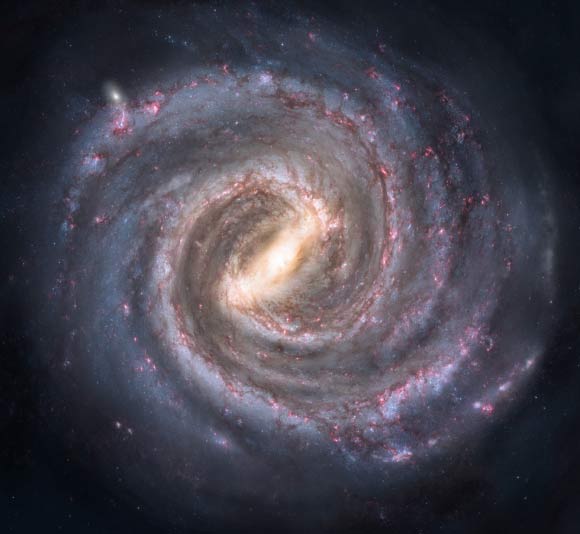What is the total mass of our Milky Way Galaxy? The short answer, so far, is 7 x 1011 solar masses, says a team of astronomers at McMaster University, Canada.
Measuring the total mass of the Milky Way, or any galaxy, is particularly difficult.
Galaxies include not only stars, planets, moons, gases, dust and other objects and material, but also dark matter.
Astronomers, however, can infer the presence of dark matter through its gravitational influence on visible objects.
Gwendolyn Eadie, a PhD candidate at McMaster University, and her supervisor Prof. William Harris use the velocities and positions of globular star clusters that orbit the Milky Way.
The orbits of globular clusters are determined by the Galaxy’s gravity, which is dictated by its massive dark matter component.
What’s new about the team’s research is the technique they devised for using globular cluster (GCs) velocities.
The total velocity of a GC must be measured in two directions: one along our line-of-sight, and one across the plane of the sky (the proper motion).
Unfortunately, astronomers have not yet measured the proper motions of all the GCs around the Milky Way.
Eadie and Prof. Harris, however, have developed a way to use these velocities that are only partially known, in addition to the velocities that are fully known, to estimate the mass of our Galaxy.
Their method also predicts the mass contained within any distance from the Galactic center, with uncertainties, which makes the results easy to compare with other studies.
The team has submitted their work to the Astrophysical Journal. They also presented their results May 31 at the Canadian Astronomical Society’s Conference.
_____
Gwendolyn M. Eadie & William E. Harris. 2016. Inferring the mass of the Dark Matter Halo from Globular Cluster 3D Kinematics. ApJ, submitted for publication








